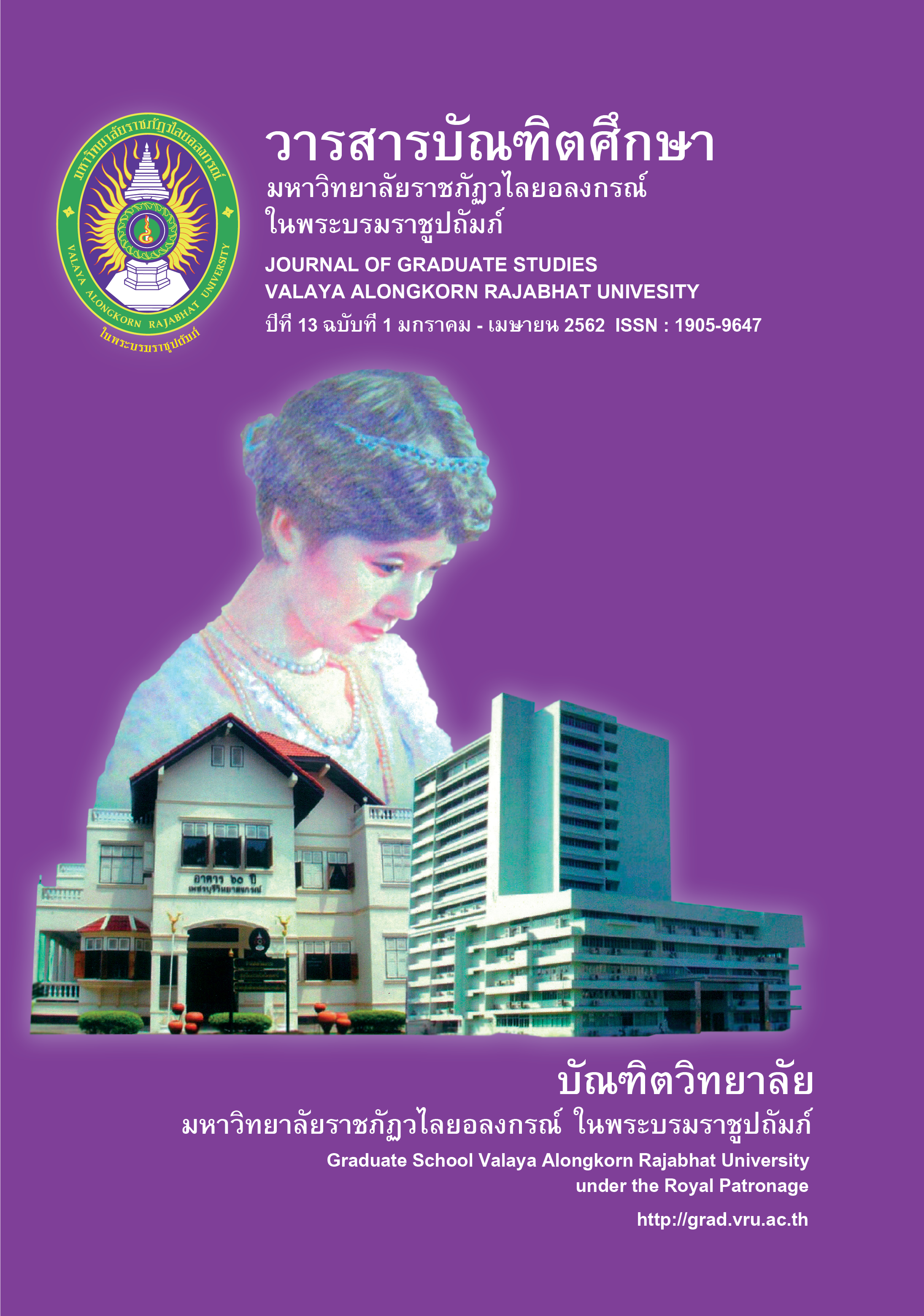AGE DIVERSE WORKFORCE MANAGEMENT PLANNING IN THE CONTEXT OF THE AGING WORKFORCE IN BUSINESS SECTOR
Main Article Content
Abstract
According to the aging society, workforce management must be well planned for business sustainability. Workforce management is not only the function of human resource management but this issue should be raised at the strategic level. Our research conducted on the previous study and theoretical research on the age-diverse workforce management to formulate the conceptual strength model related to the antecedent and the consequences factors. Model testing used CBSEM with 300 sample units and has found that “High Work Performance Workplace” and “Knowledge Management” were two determinant factors on the “Potential of Corporate Reputation” at the significance level. Consequently, the “Cultural Value” and the “Social Value” were the complete mediators.
Article Details
บทความทุกเรื่องได้รับการตรวจความถูกต้องทางวิชาการโดยผู้ทรงคุณวุฒิ ทรรศนะและข้อคิดเห็นในบทความวารสารบัณฑิตศึกษา มหาวิทยาลัยราชภัฏวไลยอลงกรณ์ ในพระบรมราชูปถัมภ์ มิใช่เป็นทรรศนะและความคิดของผู้จัดทำจึงมิใช่ความรับผิดชอบของบัณฑิตวิทยาลัย มหาวิทยาลัยราชภัฏวไลยอลงกรณ์ ในพระบรมราชูปถัมภ์ กองบรรณาธิการไม่สงวนสิทธิ์การคัดลอก แต่ให้อ้างอิงแหล่งที่มา
References
Armstrong, S., M., & Templar, A. (2005). Adapting training for older employees: The Canadian response to an aging workforce. The Journal of Management Development. 24(1/2), 57-67.
Ball, A. C., Reiss, A. E., Rudolph, C. W., & Baltes, B. B. (2011). Examining positive and negative perceptions of older workers: A meta-analysis. The Journals of Gerontology, Series B: Psychological Sciences and Social Sciences. 66(6), 687-698.
Barney, J. (1991). Firm resources and sustained competitive advantage. Journal of Management. 17(1), 99-120.
Beck, V. (2009). Older workers-older learners: The perspectives of employers in the east midlands. Leicester : Centre for Labour Market Studies/ Learning & Skills Council.
Bennett, R., & Kottasz, R. (2000). Practitioner perceptions of corporate reputation: An Empirical investigation. Corporate Communications: An International Journal. 5(4), 224-234.
Bock, G. W., & Kim, Y. G. (2002). Breaking the myths of rewards: an exploratory study of attitudes about knowledge sharing. Information Resources Management Journal. 15(2), 14-21.
Cappelli, P. (2010). New workforce management: The aging workforce and the reversal of authority. Retrieved from http://www.hiring.monster.com/hr/hr- best practices/workforce-management/hr-management-skills/new- workforcemanagement.aspx.
CPD, Managing an age-diverse workforce https://www.cipd.asia/knowledge/reports/managing-age-diverse-workforce
Cong, X., & Pandya, K. (2003). Issues of knowledge management in the public sector. Academic Conferences Limited. 1(2), 25-33.
Dholakia, D. (2005). The social influence of brand community: Evidence from European carclubs. Journal of Marketing. 69(3), 19-34.
Forester Research. (2012). Foresights workforce employee survey. Canada: Author.
Fombrun, C. J. et al. (1999). Reputation: Realizing value from the corporate image. Boston: Harvard Business School Press.
Frank, R. (2003). NRC management in motion. Retrieve from https://www.gao.gov/assets/690/684347.pdf.
Gartner. (2016). High-performance-workplace. Retrieved from www.gartner.com/it-glossary/high-performance-workplace
Green, D. (2007). Leading in a postmodern workforce. Academy of Strategic Management Journal. 6(15), 15-25.
Grubic-Nesic, M. D., & Mitrovic, S. (2014). The influence of demographic and Organizational factors on knowledge sharing among employees in organizations. Tehnicki Vjesnik. 22(4), 1005-1010.
Hedge, J. W., Borman, W. C., & Lammlein, S. E. (2006). The aging workforce: Realities, myths, and implications for organizations. Washington, DC: American Psychological Association.
Hennig-Thurau, T., Malthouse, E. C., Friege, C., Gensler, S., Lobschat, L., Rangaswamy, A., & Skiera, B. (2010). The impact of new media on customer relationships. Journal of Service Research. 13(3), 311-330.
Henkens, K., & Schippers. J. (2012). Active ageing in Europe: the role of organizations. International Journal of Manpower. 33(6), 604-611.
Hewitt, A. (2012). Recognizing the value of older workers. Retrieve from https://states.aarp.org/wp-content/uploads/2015 /08/A-Business-Case-for-Older-Workers-Age-50-A-Look-at-the-Value -of-Experience.pdf.
Kim , W. G., Jin S. B., & Kim, H. J. (2008). Multidimensional customer- based brand equity and its consequences in midprices hotel. Journal of Hospitality & Tourism Research. 32(2), 235-254.
Loomes, S., & McCarthy, G. (2011). The aging workforce: How can Australian universities address future workforce challenges. Wellington, New Zealand: ANZAM.
Mook, L. (2013). Accounting for social value. Toronto: University of Toronto Press.
Mouritsen, J. et al. (2000). Valuing expressive organizations: Intellectual capital and the Visualization of value creation. In M. Schultz, M. J. Hatch, & M. H. Larsen (Eds.), the expressive organization: Linking identity, reputation, and the corporate brand. Oxford: Oxford University Press.
Naegele, G. & Walker, A. (2006). A guide to good practice in age management. Luxembourg: official for Official Publication of the European Communities.
Northouse, P. G. (2013). Leadership: Theory and practice. 6th ed.. Thousand Oaks, CA: Sage.
Paarlberg, L. E., & Perry, J. L. (2007). Values management, aligning individual values and organization goals. The American Review of Public Administration. 37(4), 387-408.
Stam, C. (2009). Knowledge and the ageing employee: A research agenda. Retrieve from http://www.scienceguide.nl/pdf /Stam200906.pdf.
Sole, D. L., & Applegate, L. M. (2000). Knowledge sharing practices and technology use norms in dispersed development teams. In S. Ang, H. Krcmar, W. Orlikowski.
Streb, K. C., Voelpel, C. S., & Leibold, M. (2008). Managing the aging workforce: Status quo and implications for the advancement of theory and practice. European Management Journal. 26, 1-10.
United Nations. (2010). World population prospect: The 2010 Revision. Retrieved from http://www.esa.un.org/peps/fertility_figures/interactive-figures_TF-trajectories.html.
Van Riel, C. B. M., & Balmer, J. M. T. (1997). Corporate identity: The concept, its Measurement and management. European Journal of Marketing. 31(5/6/), 340-355.
Westland, J. C. (2010). Lower bounds on sample size in structural equation modeling. Journal Electronic Commerce Research and Applications. 9(6), 476-487.


